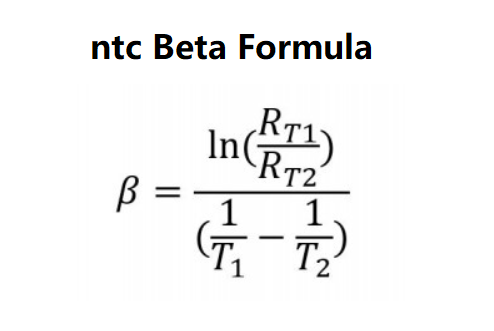 Home
Home
 Back
Back

Definition: This calculator computes the beta (\( \beta \)) value of an NTC (Negative Temperature Coefficient) thermistor, a material constant that describes the thermistor's resistance-temperature relationship, using two known resistance-temperature points.
Purpose: Engineers and technicians use this tool to determine the beta value for an NTC thermistor when designing temperature-sensing circuits or calibrating thermistors for applications in HVAC systems, medical devices, and automotive electronics.
The calculator uses the beta equation rearranged to solve for \( \beta \), as shown in the image above:
\( \beta = \frac{\ln\left(\frac{R_1}{R_2}\right)}{\frac{1}{T_1} - \frac{1}{T_2}} \)
Where:
Steps:
Calculating the beta value is essential for:
Example 1: Calculate the beta value for an NTC thermistor with \( R_1 = 10000 \, \text{Ω} \) at \( T_1 = 25 \, \text{°C} \), and \( R_2 = 5982.6 \, \text{Ω} \) at \( T_2 = 50 \, \text{°C} \):
Example 2: Calculate the beta value for an NTC thermistor with \( R_1 = 10 \, \text{kΩ} \) at \( T_1 = 77 \, \text{°F} \), and \( R_2 = 0.0136906 \, \text{MΩ} \) at \( T_2 = 32 \, \text{°F} \):
Q: How accurate is the beta value calculation?
A: The calculation is mathematically exact for the two-point method, but accuracy depends on the precision of the resistance and temperature measurements. The beta value may vary slightly over different temperature ranges.
Q: Why are temperatures converted to Kelvin?
A: The beta equation uses absolute temperatures in Kelvin to model the exponential relationship between resistance and temperature.
Q: What does a negative beta value indicate?
A: For an NTC thermistor, beta should be positive. A negative beta value indicates incorrect inputs, such as resistance increasing with temperature (which would suggest a PTC thermistor) or swapped temperature-resistance pairs.